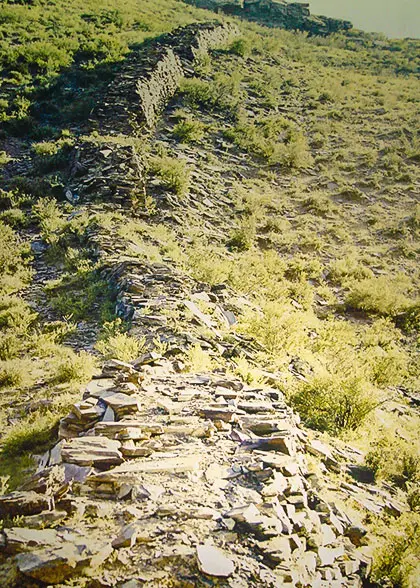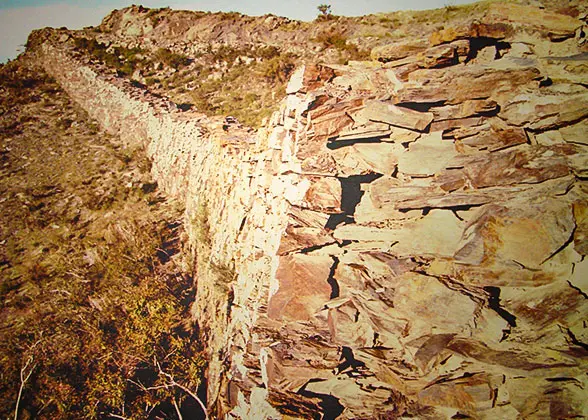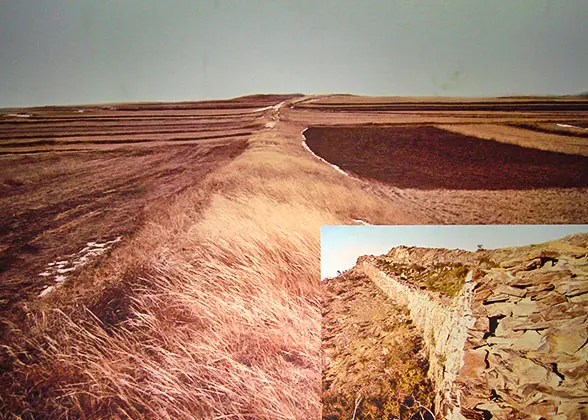Qin Dynasty Great Wall
The Great Wall of the Qin Dynasty (221BC-207 BC) was built during the reign of Emperor Qin Shi Huang, along the country's northern border to prevent the invasion of Huns.
Why did Qin build the Great Wall of China?
In 221BC, Emperor Qin Shi Huang unified China for the first time and established the Qin Dynasty after annexing six states. However, the nomadic Huns in the north were still a constant threat- often invading the southern farmers and looting their property. To safeguard his people and territory, Emperor Qin Shi Huang ordered about 300,000 soldiers to fight back under the command of General Meng Tian.
![]() See more about General Meng Tian Attacked the Huns
See more about General Meng Tian Attacked the Huns
However, the threat was not eliminated, so he ordered the giant military defensive wall be built.
How the 10,000-Li Great Wall Came into Being
|
Qin Shi Huang was not the first one to build the Great Wall. As early as the Zhou Dynasty (1046BC-256BC), many states had already built defensive walls along their borders to prevent attack from other states and northern Huns. But most sections were only 2,000 to 3,000 li (621 to 932 miles) long. Emperor Qin Shi Huang mainly renovated the Northern Wall of Yan State, the Northern Wall of Zhao State, and the Qin State Wall, and built some sections of his own to link them together, forming a magnificent, giant and connected defensive wall. This is the wall known to later generations as the 10,000-li Great Wall.
There is no specific measurement of the length of the Qin Dynasty Great Wall. Based on its name, "10,000-li Great Wall" is 5,000 kilometers long, or 3,107 miles, (1 li= 0.5 kilometer= 0.3107 mile).
The construction of the wall cost many lives and a great deal of money and materials. The builders were civilians, soldiers, and convicted criminals. The wall was made of rammed earth and stones, which were acquired locally. The wall functioned as a strong defense in that it protected people from wars and maintained peace and stability during the Qin Dynasty.
Qin Dynasty Great Wall Was Divided into Two Parts by the Yellow River
The wall consists of two parts: one part to the south of the Yellow River, and the other to the north of the river.
The southern part ran from Lintao (today's Minxian County in Gansu Province), via Guyuan County in Ningxia, Huanxian in Gansu, Jingbian County, Hengshan District, Yuyang District, and Shenmu County of Yulin in Shaanxi, Tuoketuo County in Inner Mongolia, and ends at the southern bank of the Yellow River.
The northern part starts from Langshan Mountain in the west, across Daqing Mountain, via Jining District and Xinghe County of Ulanqab in Inner Mongolia, Shangyi County, Zhangbei County, and Weichang County in Hebei, and enters Liaoning Province. After crossing Fushun and Benxi in Liaoning, it turns southeast, and ends at the estuary of Qingchuan River.
Relics of the Great Wall of Qin Dynasty
Nowadays, the relics can be found in Guyang County and Urat Front Banner in Inner Mongolia.![]() The relics in Guyang are 75 miles (120 kilometers) long. The wall was mainly built on the northern slope of mountains, and comprises piles of stone slabs, without any filling. The best-preserved section is in Jiufenzi Town, Guyang County. It has a total length of 7.5 miles (12 kilometers). The wall is 3.4 yards (3.1 meters) wide at the bottom, and 3 yards (2.8 meters) wide at the top. The outside is 16 feet (5 meters) high from the outside, and the inside is 7 feet (5 meters) high.
The relics in Guyang are 75 miles (120 kilometers) long. The wall was mainly built on the northern slope of mountains, and comprises piles of stone slabs, without any filling. The best-preserved section is in Jiufenzi Town, Guyang County. It has a total length of 7.5 miles (12 kilometers). The wall is 3.4 yards (3.1 meters) wide at the bottom, and 3 yards (2.8 meters) wide at the top. The outside is 16 feet (5 meters) high from the outside, and the inside is 7 feet (5 meters) high.
There are four sites of beacon towers along the wall, which are also constructed of piles of stone slabs. At the highland, near the beacon towers, are the sites of stone walls, which possibly were sentry posts. Hundreds of cliff paintings can be seen near the wall. These paintings vividly portray sheep, camels, dancers, cavalry, and Turkic script, reflecting the lifestyle of northern nomadic people. Additionally, ancient potsherds can be found near the wall.![]() The relics in Urat Front Banner have been found in the heart of Yinshan Mountains. The stone wall is 124 miles (200 kilometers) long, 11 feet (3.5 meters) high, 4.5 yards (4.1 meters) wide at the bottom, and 1.6 yards (1.5 meters) wide at the top. Sites of beacon towers can be found along the wall at intervals of about 0.6 mile (1 kilometer).
The relics in Urat Front Banner have been found in the heart of Yinshan Mountains. The stone wall is 124 miles (200 kilometers) long, 11 feet (3.5 meters) high, 4.5 yards (4.1 meters) wide at the bottom, and 1.6 yards (1.5 meters) wide at the top. Sites of beacon towers can be found along the wall at intervals of about 0.6 mile (1 kilometer).
|
|
Urgent Protection is Needed
The Qin Dynasty Great Wall has suffered greatly from natural erosion over the past 2,200 years. Most parts have disappeared, collapsed, or become dilapidated. The blue or yellow stone slabs are covered with black or dark brown oxide. Human activity is another destructive factor. Some stones were removed, and the wall was torn down. Fortunately, the government has invested a large amount of money in the restoration of the wall in western Inner Mongolia. More than 328 yards (300 meters) of wall has been repaired. Scientific excavations are being made at some beacon towers, fortresses, and sentry posts. However, this is far from enough in renovating the heritage sites. We should act now to protect the wall before its disappearance.![]() See more: Top 8 Great Wall of China Events in History
See more: Top 8 Great Wall of China Events in History


